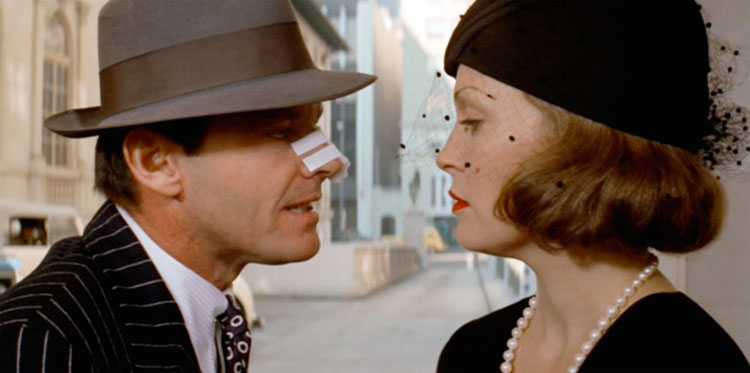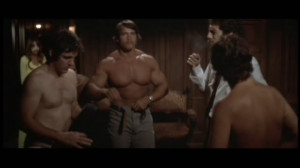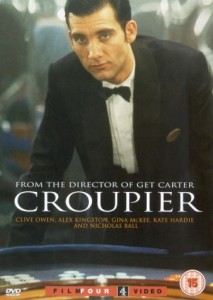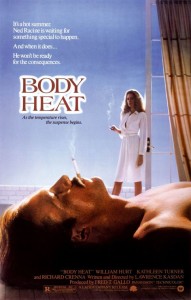
Chinatown – even money that it was the first film to pop into your head after reading the title of this piece. (Source: MovieMail)
David Lebovitz gives you a crash course in film from an esoteric genre, director, or foreign country’s cinema, complete with spoiler-free descriptions and analyses of films that act as a good starting point for your own celluloid journey. This edition, as a follow up to his previous installment, he presents you with a look at neo-noir.
Neo-noirs, as their name suggests, started showing up after the classic cycle had concluded. By this point, “film noir” was a recognized term. Many of the B-movies that made up the body of classic noir were now getting recognized and celebrated as groundbreaking cinema. It was at this time that studios started making films that were not just tributes to classic noirs, but modern continuations of their themes.
Neo-noirs tend to feature the same basic storylines as classic noirs – detectives going after criminals, Average Joes getting wrapped up in plots larger than they can handle, and a morally gray worldview. There are stylistic continuations as well – while most neo-noirs are in color, they still tend to occasionally feature dark sets, voiceover narration, and heavy use of flashbacks.
Post-code Hollywood allowed filmmakers to do everything they were forced to skirt around during the classic era – they could address race, gender, and sexuality head-on without worrying about censors (at least not as much.) For the first time we were seeing films about black detectives (Devil in a Blue Dress) and films with less-than-implied sexuality (Body Heat). They could also show more brutal violence, and occasionally the antagonists would get away with their crimes.
Some films paid direct homage to classic noirs by adapting recognizable styles, sounds, and locations, and would occasionally take place in the 40s or 50s – these are called retro-noirs. Chinatown, and to an extent The Long Goodbye, are both examples. Some straight up satirized the genre, such as Steve Martin and Carl Reiner’s Dead Men Don’t Wear Plaid.
Two of the films listed will be retro-noirs, and two will fit a more standard definition of neo-noir.
Chinatown (1974)

Source: impawards.com
When writing my piece on classic noir, I deliberately left off Maltese Falcon for two big reasons.
1) Most of the films I picked were from about the year it came out, so I wanted to spread out the years.
2) It was a painfully obvious choice, and I wanted to avoid that. I find myself unable to make the same decision regard Chinatown.
The film takes place in 1937 Los Angeles during a drought. Private Eye J.J. “Jake” Gittes is hired by a woman named Evelyn Mulwray who wants him to prove that her husband is cheating on him. Gittes does what he does best and gets proof of Mr. Mulwray meeting a young woman, which makes the front page of the paper…. only to find out that the woman he met claiming to be Mrs. Mulwray was an imposter. When Mr. Mulwray shows up dead, Gittes tries to figure out what happened to him and to the girl he was seeing. This leads Gittes into a web of lies, corruption, and murder – all relating to LA’s water rights. Gittes eventually faces Noah Cross, the business partner of Mrs. Mulwray’s father, who has a vested interest in the whole affair.
Chinatown is a perfectly realized piece of neo-noir. It takes place during the classic era, has a femme fatale, a complex plot, morally dubious actions, sexuality… it’s like screenwriter Robert Towne had a film noir checklist and hit every box, while still making a film that is surprisingly free of any clichés. It stars Jack Nicholson in his prime, the great Faye Dunaway, and features John Huston in a semi-rare acting performance as one of the most memorable villains in film history. It also has, for my money, one of the best original soundtracks in film history.
Chinatown has everything you want in a noir, a neo-noir, and a film in general. If you haven’t seen it, stop reading this long enough to put it on your Netflix queue.
The Long Goodbye (1973)

(Source: impawards.com)
The Long Goodbye is an adaption of Raymond Chandler’s 1953 Phillip Marlowe novel of the same name. It follows almost exactly the same story – right down to including 1953 Phillip Marlowe in 1973 LA. Director Robert Altman used the phrased “Rip Van Marlowe” to describe the film. Elliot Gould – a hot property in Hollywood at the time – plays the famous detective as if nothing had changed. He’s still a smart-aleck intuitive detective who knows his routine. To emphasize his out-of-placeness: with the exception of one scene, Marlowe is literally never seen without a cigarette in his mouth – smack dab in the middle of smoke-free, health-conscious 70s Los Angeles.
In typical noir fashion, it features a convoluted plot with many seemingly unrelated facets that weave their way together. The story starts with Marlowe honoring a request by his friend Terry Lennox (played by Jim “Ball Four” Bouton) to get a ride to the Cali-Mexico border. He is later told that Lennox committed suicide, but he has doubts about the official report. Later, a beautiful woman visits him and hires him to look for her alcoholic husband. Shortly after, a gang Lennox owed money to roughs Marlowe up. Marlowe puts his detective skills to use to solve all of these cases, and find out how they are connected.
Keep your eyes open for a young Arnold Schwarzenegger playing an bodyguard.

I swear this makes sense in context. (Source: Cetera Noir)
(Source, if needed: http://ceterax.blogspot.com/2011/12/arnold-swarzenegger-wow-pic.html) (Caption: I swear this makes sense in context.)
This film is a bit esoteric – it is, after all, a Robert Altman film – but it’s an intriguing taking on film noir and Hollywood and general.
Body Heat (1981)
Warning: everything about this film will make you feel sticky.
Here we have a film that is beautiful, suspenseful, as morally dubious as you’ll find, and is saturated in unadulterated sexuality. Lots of it. The core cast is solid: William Hurt, Kathleen Turner (in her film debut), Mickey Rorke, Ted Danson, and Richard Crenna. The entire story takes place during a brutal Florida heat wave, and every character in the film is dripping with sweat the entire film.
Ned Racine is a sleazy low-level lawyer who gets involved with the married Matty. After having a steamy affair, Matty makes it clear that she wants to leave her wealthy husband, Edmund. Ned wants Matty, but also wants Edmund’s money. He determines that the best way to have both is to kill Edmund. Ned plans to set up an alibi and make Edmund’s death look like a botched arson attempt. Things get complicated when Edmund’s niece, Heather, is set to inherit half of her uncle’s money.
If the plot sounds familiar, Body Heat is essentially a modern remake of Double Indemnity. Ned is about the scummiest protagonist you’ll find in a motion picture, to the point where you almost want him to fail, but Turner’s femme fatale is so beautifully dangerous you can’t help but be absorbed in the action.
The film is written and directed by Lawrence Kasdan in his directorial debut. If the name sounds familiar, he’s written a few notable films you may have seen. His son has done some film work and has produced a few notable TV series. It was also scored by the great John Barry and secretly produced by George Lucas. (Don’t worry, nobody let Lucas near the writers’ room.)
Croupier (1998)
 We’ve arrived at the “not a detective” segment of our program. Croupier stars the always cool Clive Owen in his international breakout role. He plays a prototypical neo-noir protagonist – emotionally detached and thinks in a calculating manner, but in the end still finds himself in trouble. The most recognizable noir characteristics are the voice over narrations, the use of flashbacks, and a femme fatale… or, in this case, two.
We’ve arrived at the “not a detective” segment of our program. Croupier stars the always cool Clive Owen in his international breakout role. He plays a prototypical neo-noir protagonist – emotionally detached and thinks in a calculating manner, but in the end still finds himself in trouble. The most recognizable noir characteristics are the voice over narrations, the use of flashbacks, and a femme fatale… or, in this case, two.
Jack Manfred (who often refers to himself as “the croupier” in his inner monologues) is a down-on-his-luck writer. He lives in a basement flat in London and is in a somewhat steady relationship. In order to make ends meet, his South Africa-based con man of a father sets Jack up on an interview with a casino. Against his better judgment, he takes the job and becomes absorbed in the world of the casino. Although he never gambles at the table, he takes nothing but chances with the rest of his life. Things get rocky with his girlfriend when he shows her part of his book – which is about a cold croupier who enjoys watching others lose, something a little too close to home. He also has a one night stand with fellow croupier and allows himself to be seduced by a regular – both of which are strictly against casino policy. As things apart around him, the customer he had a fling with wants to get him involved in a plot to rob the casino.
At one point, Jack says, “I’m not an enigma, just a contradiction.” That, in essence, sums up the film and much of neo-noir.
All of the listed films are available on Netflix.



One thought on “An Introduction to Neo-Noir”